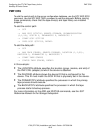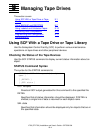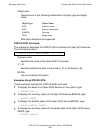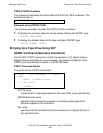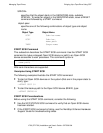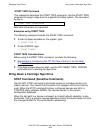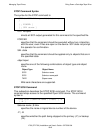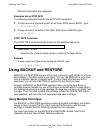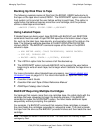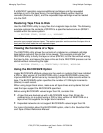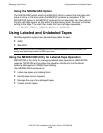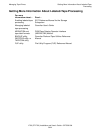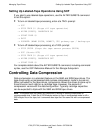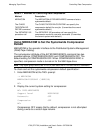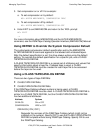
Managing Tape Drives
L700 (CTL700) Installation and User’s Guide—527338-004
9-7
Using BACKUP and RESTORE
Wild-card characters are supported.
Examples Using STOP SCSI
The following examples illustrate the STOP SCSI command:
•
To stop access to the backup path of the Open SCSI device $DEV1, type:
-> STOP $DEV1-B
•
To stop access to all paths of the Open SCSI device $DEV00, type:
-> STOP $DEV00
STOP TAPE Command
The STOP TAPE command stops access to the specified tape drive.
$tape-name | $1dev
Specifies the name or logical device number of the tape device.
Example
To stop access to all tape drives starting with $TAPE, type:
-> STOP TAPE $TAPE*
Using BACKUP and RESTORE
BACKUP and RESTORE are two of the most commonly used utilities for moving
files between a NonStop system and tapes. You can use BACKUP to copy disk
files to magnetic tape on a regular basis. If one or more disk files are lost or
destroyed, you can use RESTORE to replace the lost files from tape.
To begin a BACKUP or RESTORE operation when using the tape library, a
cartridge must be loaded into one of the drives contained within the tape library.
For operations requiring a single cartridge, the tape drive writes to or reads from
the tape. Then the robot unloads the cartridge (unless the NOUNLOAD option
was specified) and loads the next requested tape label cartridge.
Using Multiple Cartridges
For BACKUP or RESTORE operations requiring multiple cartridges, the system
issues a mount request that the robot receives via the server, and the new
cartridge is loaded. See the following subsections for examples.
For more information on the BACKUP and RESTORE utilities, refer to the
Guardian Disk and Tape Utilities Reference Manual.
STOP TAPE { $tape-name | $1dev }



